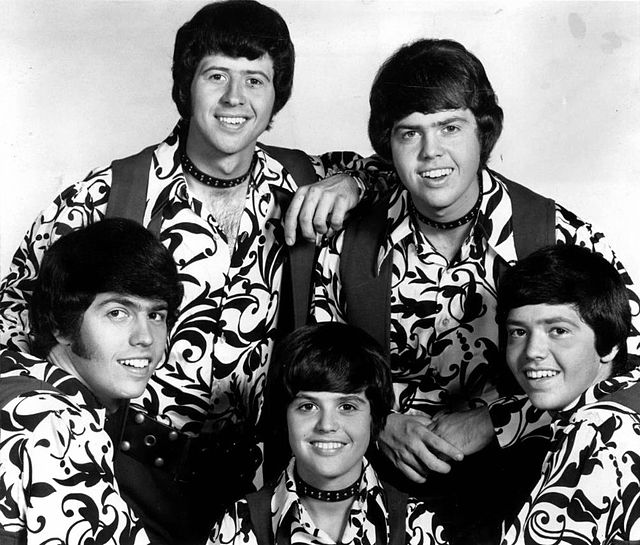
The world of music pauses to mourn the passing of Wayne Osmond, a foundational pillar of the iconic family singing group, The Osmonds. At 73, Wayne, a singer, guitarist, and co-writer of many of their indelible hits, concluded a life rich in melody, faith, and an unwavering spirit. His death, confirmed by his grieving family, marks the end of an era for a group that captivated millions and left an indelible mark on popular culture.
From their humble beginnings as a barbershop quartet to becoming global pop sensations in the 1970s, The Osmonds, with Wayne at its core, created a sound that resonated deeply with audiences worldwide. Beyond the catchy tunes and electrifying performances, Wayne Osmond was celebrated by those closest to him for his profound humility, his capacity for unconditional love, and an enduring optimism that carried him through significant personal challenges. His story is one of dedication to family, music, and an enduring belief system.
This in-depth look explores the multifaceted life of Wayne Osmond, tracing his journey from a Mormon household in Ogden, Utah, through the pinnacles of pop stardom, to his later years marked by personal reflection and quiet joy. We delve into the early days of The Osmonds, their meteoric rise, the unique dynamics of their family band, and the profound impact Wayne had on his siblings, his family, and the countless fans who cherished his contributions.

1. **The Passing of Wayne Osmond at 73** Wayne Osmond, a beloved figure in the annals of American music, passed away at the age of 73, leaving behind a legacy of harmonious melodies and a life lived with profound integrity. His death occurred this week at a Salt Lake City hospital, following what his brother Merrill Osmond described on Facebook as a “massive stroke.” The news sent ripples of sadness across the entertainment world, as fans and peers remembered the singer, guitarist, and founding member of the million-selling family act.
The family confirmed his passing in a poignant statement posted Thursday on the Facebook page of Wayne’s daughter, Amy Osmond Cook. “Wayne Osmond, beloved husband and father, passed away peacefully last night surrounded by his loving wife and five children,” the statement read, painting a picture of a man cherished deeply by his immediate family. This peaceful departure, surrounded by those he held dearest, speaks volumes about the warmth and love that characterized his personal life, even as his public persona brought joy to millions.
Merrill Osmond, in his own heartfelt confirmation, noted that he was able to say his “goodbyes” at the hospital, highlighting the gravity of the moment for the Osmond siblings. Wayne Osmond’s passing marks a significant moment, as he is the first of the Osmond siblings to pass away. The collective tributes from his brothers and daughter underscore not only his musical contributions but also the deep personal connections he forged throughout his life, emphasizing his role not just as a performer, but as a cherished family member.
Read more about: Hollywood Bids Farewell: Remembering 12 Unforgettable Legends of Stage, Screen, and Genre Films Who Left Us in 2025

2. **A Life Defined by Humility and Unconditional Love** Perhaps one of the most consistent themes in the tributes to Wayne Osmond is the extraordinary depth of his character, particularly his unwavering humility and profound capacity for unconditional love. His brother Merrill Osmond, in a deeply moving Facebook post, captured the essence of Wayne’s spirit with words that resonated with anyone who knew him. Merrill wrote, “I’ve never known a man that had more humility. A man with absolutely no guile.” These words paint a portrait of an individual devoid of pretense, whose actions and interactions were always genuine and sincere.
Merrill further elaborated on this remarkable quality, stating that Wayne was “An individual that was quick to forgive and had the ability to show unconditional love to everyone he ever met.” This description speaks to a rare generosity of spirit, one that could overlook faults and embrace others without reservation. In an industry often marked by ego and ambition, Wayne Osmond’s steadfast humility stood as a beacon, influencing not only his family but countless others who encountered his warmth and kindness.
His legacy, as articulated by the family, is indeed one of “faith, music, love, and laughter,” a testament to these core virtues. The impact of such a man, one so rich in compassion and devoid of malice, extends far beyond his musical achievements. It is a legacy of human connection, of setting an example for how to live with grace and open-heartedness, leaving an enduring imprint on the hearts of many people around the world, as his family lovingly affirmed.

3. **The Genesis of The Osmonds: Barbershop Roots in Utah** Before their ascent to global pop stardom, The Osmonds, with Wayne as a cornerstone, had exceptionally humble beginnings rooted in their Mormon upbringing in Ogden, Utah. Wayne Osmond was the fourth oldest of nine children and the second oldest among the musical performers, born Melvin Wayne Osmond in August 1951. The family’s deep connection to their faith and community provided the fertile ground from which their musical journey blossomed in the late 1950s.
The siblings’ musical career officially began when Wayne, alongside his older brother Alan and younger brothers Merrill and Jay, formed a barbershop quartet. This early iteration of the group honed their skills by performing for their Church of Jesus Christ of Latter-day Saints congregation. These initial performances were not only a source of joy for their community but also laid the foundational harmonies and performance discipline that would later define their unique sound and tireless work ethic.
Their father, George Osmond, a singer himself, played a crucial role in shaping these early years, teaching the quartet how to sing four-part harmonies. This rigorous training, combined with their natural talent, allowed them to develop an extraordinarily polished sound from a very young age. This foundation in traditional barbershop harmony was the crucible in which the future pop sensations were forged, providing them with a versatility and vocal precision that would serve them well as their career evolved.

4. **Discovered by Disney and “The Andy Williams Show”** The Osmonds’ journey from local Utah performers to national television stars began with a serendipitous discovery that reads like a classic Hollywood tale. While performing at fairs and amusement parks in the late 1950s, the barbershop quartet’s talent caught the attention of those who would open the doors to a much larger stage. A pivotal moment arrived in 1962 when the family traveled to Los Angeles.
After an unsuccessful audition for “The Lawrence Welk Show,” fate intervened during a consolation trip to Disneyland. Dressed in their signature matching outfits, the boys were spotted by a barbershop quartet performing on Main Street. Impressed by their impromptu performance, which lasted for over an hour, they were quickly brought to the Disneyland entertainment office and signed their first professional contract. This event marked their official entry into the professional entertainment world, a testament to their undeniable talent and stage presence even at a young age.
The true breakthrough, however, came shortly thereafter when the father of acclaimed singer Andy Williams spotted them performing at Disneyland. This led to a recommendation to his son, and the Osmond Brothers soon booked a five-year network TV run on “The Andy Williams Show.” Their regular appearances throughout the 1960s cemented their popularity, earning them the affectionate nickname “one-take Osmonds” due to their flawless and tirelessly rehearsed performances. This consistent national exposure transformed them from a regional act into household names, preparing them for the pop phenomenon they were about to become.
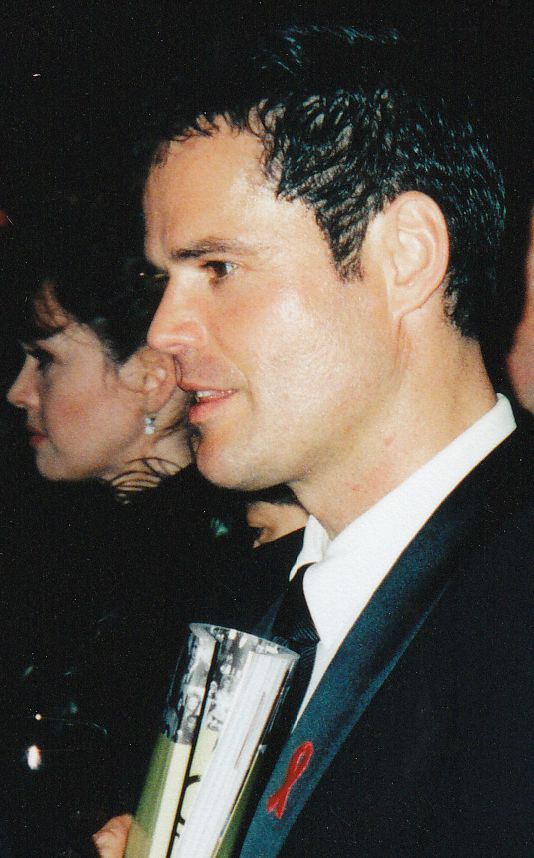
5. **Rise to Stardom: “One Bad Apple” and Teen Idolatry** The 1970s marked the zenith of The Osmonds’ popularity, as they transitioned from beloved variety show regulars to bona fide pop idols. With the addition of younger brother Donny Osmond in 1963, the group changed its name to The Osmonds and broadened its musical repertoire to embrace clean-cut pop songs. While their initial singles faced a lukewarm reception, the landscape of pop music was shifting, and the success of other family acts like the Jackson 5 soon paved the way for their own commercial breakthrough.
MGM Records, recognizing the burgeoning trend, signed the band and strategically sent them to work at the famed R&B studio Muscle Shoals. It was there that they were presented with a song that would forever change their trajectory: “One Bad Apple (Don’t Spoil the Whole Bunch).” Originally intended for the Jackson 5 but rejected by their record label, the track proved to be the perfect vehicle for The Osmonds. Its perky, bubbly, and bright sound resonated immediately with audiences, propelling it to the top of the US singles chart, where it remained for an impressive five weeks in February 1971.
“One Bad Apple” not only became a massive hit but also firmly established The Osmonds as a dominant chart presence, a decade after their professional debut. This success opened the floodgates for a string of other Billboard Hot 100 hits, including “Down by the Lazy River,” “Yo-Yo,” “Love Me for a Reason,” and “Crazy Horses.” The group, with Wayne contributing his strong baritone voice and guitar skills, generated a fevered excitement often compared to that of The Beatles. Their tours were met with hysteria, evident in incidents like the crowd surge at Heathrow Airport in 1973, where thousands of teenage fans mobbed their arrival, underscoring their immense teen idolatry.
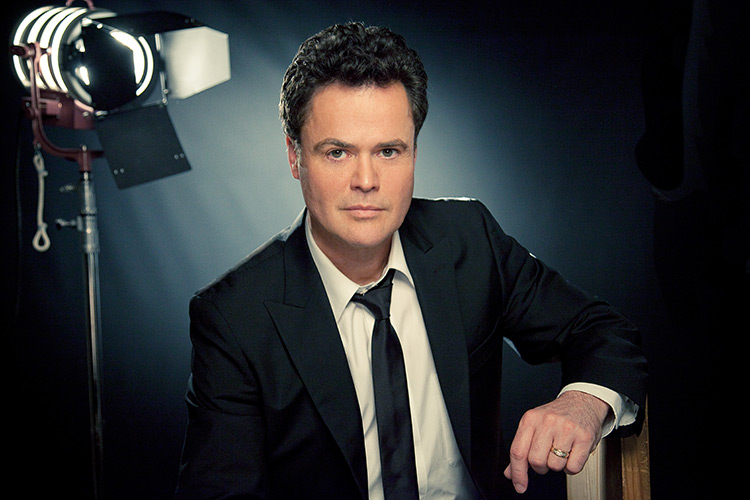
6. **The Comparison to the Jackson 5 and Donny’s Emergence** The early 1970s pop landscape saw the parallel rise of two incredibly successful family groups: The Osmonds and The Jackson 5. Both groups captured the hearts of millions with their infectious energy, catchy tunes, and undeniable talent. This simultaneous ascent naturally led to comparisons, with music critics and fans often juxtaposing their sounds and images. For The Osmonds, this comparison was particularly relevant when “One Bad Apple” was given to them after being rejected by the Jacksons, further intertwining their narratives in pop history.
Within The Osmonds, the charismatic younger brother, Donny Osmond, quickly emerged as a breakout star. His youthful charm and strong lead vocals positioned him as a central figure, and he was often marketed as the “white counterpart” to Michael Jackson, the lead singer of the Jackson 5. This strategic positioning capitalized on the public’s appetite for clean-cut, family-friendly pop, further amplifying The Osmonds’ appeal, particularly among teenage audiences.
Wayne, as an integral founding member, played a crucial role in supporting this dynamic. While Donny took the lead, Wayne’s baritone voice, guitar playing, and songwriting contributions—including co-writing hits like “Crazy Horses”—were essential to the group’s cohesive sound and success. This era showcased the unique blend of individual talent and familial harmony that defined The Osmonds, with Wayne’s steady presence ensuring the musical bedrock upon which their pop empire was built, even as individual stars began to shine brighter within the constellation.
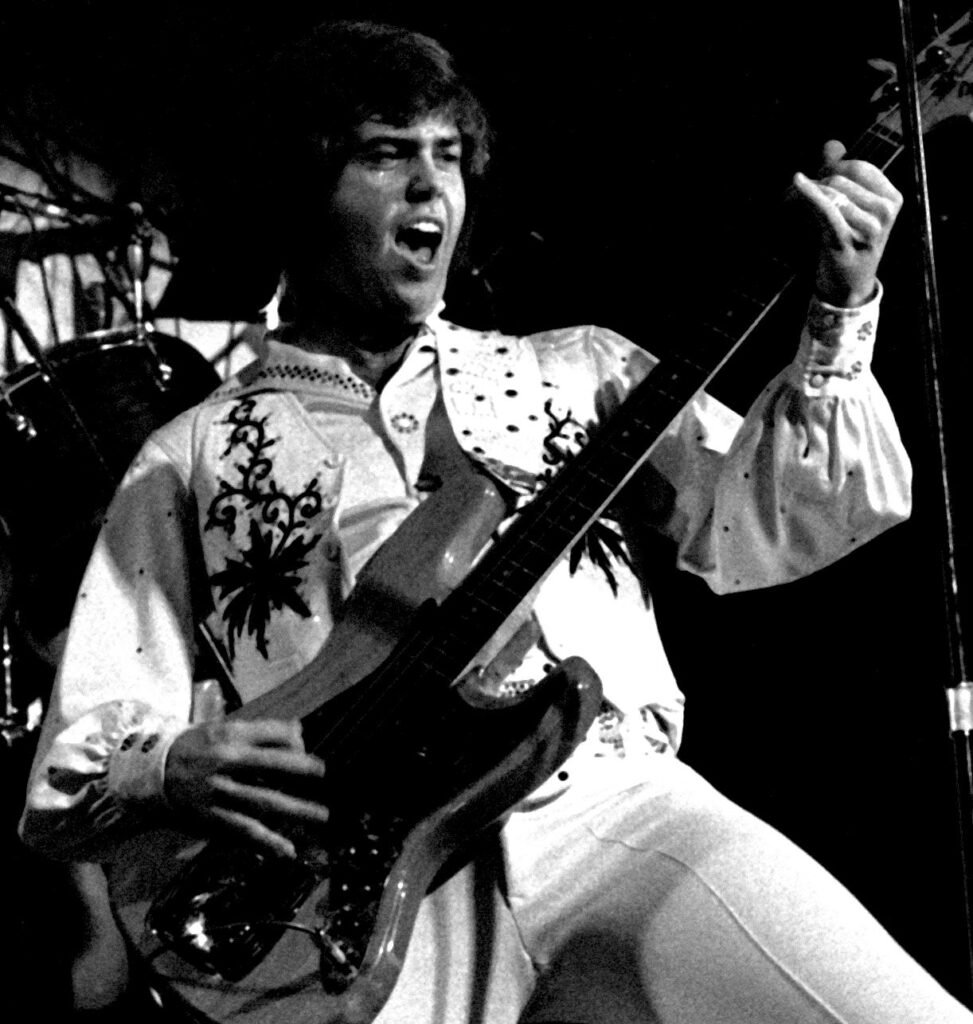
7. **The Fading Pop Spotlight and New Ventures** As the mid-1970s progressed, the fickle nature of the pop music industry began to impact The Osmonds’ record sales, and their initial fevered excitement started to wane. The dynamic within the family act also shifted significantly, as Donny and younger sister Marie Osmond were offered their own television variety show. “Donny & Marie” became a massive hit in the US, later screened by BBC One in the UK, creating a new focal point for the Osmond family’s entertainment ventures.
This new direction led to the band going on hiatus, and ultimately, The Osmonds formally dissolved in 1980. However, the familial bonds and love for performing ensured that the separation was never absolute. The brothers would regularly reform for various engagements, including county fairs and reunion tours over the coming decades, demonstrating their enduring connection to their music and their fans. Wayne made frequent appearances on the “Donny and Marie” variety show, which ran from 1975 to 1979, and even occasionally served as a producer, showcasing his versatility beyond just performing.
Demonstrating their adaptability and resilience, Wayne Osmond, alongside Alan, Merrill, and Jay, regrouped in the 1980s as a country act. This pivot allowed them to explore a different musical genre and find renewed success, even scoring a handful of hits, including “I Think About Your Lovin’.” This period underscored Wayne’s commitment to music and his ability to evolve with changing tastes, proving that their talent extended beyond the pop charts of their initial fame. It was a testament to their deep-seated passion for performance and their family’s collective musical spirit, continuing to share their gifts with new audiences.
Read more about: You Won’t Believe These 14 Super Celebrity Duos Who’ve Been BFFs For Years, And Some Might Even Shock You!

8. **Battling Health Adversities: Brain Tumor and Hearing Loss**The journey of Wayne Osmond, while largely defined by harmonious melodies and vibrant performances, also encompassed significant personal health battles that he faced with characteristic fortitude. In the mid-1990s, he was diagnosed with a brain tumor, a condition that profoundly altered his physical capabilities and, ultimately, his musical career. This diagnosis marked a challenging chapter, requiring intensive medical intervention and reshaping aspects of his daily life.
The tumor, identified as an ependymoma, was located “up behind my cerebellum” and described as “an inch around and two inches long,” indicating its considerable size and potential impact. Wayne Osmond himself recounted the onset of symptoms around 1994, noting a marked decline in his abilities. He recalled, “I noticed I couldn’t play my saxophone any more because my head would start throbbing,” and further described how “my knees would fall out from under me when I was on stage.” These symptoms underscored the severity of his condition, signaling the urgent need for treatment.
The subsequent surgery and related cancer treatments, while successful in addressing the tumor, came with a profound and lasting consequence: significant hearing loss. This impairment persisted for the remainder of his life, fundamentally altering his experience of the world and his interaction with music. Despite having retired from his active musical career due to this hearing impairment, Wayne’s enduring spirit and optimistic outlook would continue to shine, as he sought new avenues of joy and peace.
9. **The Impact of a 2012 Stroke and Resilient Spirit**Adding to the health challenges Wayne Osmond had already navigated, he suffered a stroke in 2012, which brought further limitations to his musical expression and daily life. This particular medical event rendered him unable to play the guitar, an instrument that had been a steadfast companion throughout his decades-long career as a founding member of The Osmonds. For a musician whose identity was deeply intertwined with his performance, this was an especially poignant loss.
The stroke compounded the effects of his earlier brain tumor and hearing loss, presenting a new set of physical hurdles. Yet, even in the face of these accumulated adversities, Wayne Osmond’s spirit remained remarkably resilient. His family and close friends consistently spoke of his unwavering optimism, a trait that allowed him to transcend his physical ailments and continue to find profound meaning in his life. He demonstrated an inspiring capacity to adapt and persevere, never succumbing to despair.
This enduring resilience was not merely a passive acceptance of his circumstances but an active cultivation of an optimistic perspective. Wayne’s ability to maintain a positive outlook, even as his physical capabilities diminished, became a testament to his profound inner strength. It was a strength rooted in his faith and his deep connection to his family, providing him with a foundation upon which he could build a life of joy and purpose, regardless of external challenges.
Read more about: Beyond the Buzzer: Unearthing the Untold Fates and Hidden Hardships of Beloved Game Show Hosts Who Left Us Too Soon or Quietly Endured

10. **An Optimist’s Perspective: Finding Joy Amidst Challenges**Wayne Osmond’s philosophical approach to life, particularly in confronting his health issues, provided a profound lesson in optimism and contentment. Despite the significant hearing loss he experienced, he famously expressed a remarkable perspective, telling the Deseret News in 2018, “I’ve had a wonderful life. And you know, being able to hear is not all that it’s cracked up to be, it really isn’t.” This candid admission revealed a man who had made peace with his circumstances and found liberation in them.
For Wayne, this adjustment led to the discovery of new, simpler joys that enriched his later years. He found particular solace in the quiet solitude of his home and yard. He shared, “My favorite thing now is to take care of my yard. I turn my hearing aids off, deaf as a doorknob, tune everything out, it’s really joyful.” This vivid description paints a picture of a man who embraced a profound serenity, finding happiness in the mundane and cultivating a personal sanctuary away from the demands of a public life.
His brother Donny Osmond aptly characterized Wayne as “the ultimate optimist,” a descriptor that perfectly encapsulates this unwavering positive outlook. Wayne’s capacity to find joy and peace amidst profound physical challenges speaks to a deep well of inner strength and a life lived in gratitude. His example offers a powerful reminder that contentment can be found not in the absence of hardship, but in the ability to reframe one’s perspective and appreciate the simple, often overlooked, beauties of existence.

11. **Family Man: Marriage to Kathlyn White and Five Children**Beyond the spotlight of musical fame, Wayne Osmond’s life was anchored by a deep and abiding devotion to his family. In 1974, he married Kathlyn White, a former Miss Utah, embarking on a partnership that would span nearly five decades. Together, they built a loving home and raised five children: Amy, Steven, Gregory, Sarah, and Michelle. This commitment to his wife and children was a cornerstone of his existence, providing him with unwavering support and immense personal joy.
The strength of these familial bonds was evident in his final moments. As his family lovingly stated, Wayne “passed away peacefully last night surrounded by his loving wife and five children.” This tender scene underscores the warmth and affection that characterized his personal life, highlighting the paramount importance he placed on his role as a husband and father. To be surrounded by those he cherished most as he departed spoke volumes about the intimate connections he cultivated throughout his life.
His daughter, Amy Osmond Cook, shared a poignant tribute that captured the depth of her sadness at his passing, yet also expressed profound gratitude for the memories they created. She wrote, “I am having a hard time expressing the depth of my sadness that I won’t have my ‘twin’ in my life for a while… But I am so grateful for the time I was able to spend with him.” This sentiment echoes the family’s broader message about “families are forever,” a core tenet of their faith that sustained them through both joys and sorrows.
Wayne himself reflected on how his health battles had brought him even closer to his wife. In an interview with Coping Magazine in 2004, he described Kathlyn as “an absolute angel,” stating, “I’m a very, very blessed man. That’s what I am.” He recognized that the challenges they faced had “enlightened” him, making him realize “that life really is important” and deepening his appreciation for their bond. This intimate perspective reveals a man who valued connection above all else, seeing his family as his greatest triumph.

12. **Donny Osmond’s Heartfelt Farewell: Light, Laughter, and Eternity**The profound impact Wayne Osmond had on his younger brother, Donny, was powerfully articulated in a heartfelt tribute shared on Instagram following Wayne’s passing. Donny confirmed that Wayne “passed away peacefully last night from a stroke,” expressing deep gratitude for the opportunity to visit his brother in the hospital before his death. This final interaction allowed for a poignant goodbye, underscoring the deep affection and connection that defined their sibling relationship.
Donny’s message painted a vivid picture of Wayne’s character, remembering him as a source of immense positivity: “Wayne brought so much light, laughter, and love to everyone who knew him, especially me. He was the ultimate optimist and was loved by everyone.” These words highlight not only Wayne’s personal warmth but also his consistent ability to uplift those around him, embodying a spirit of joy that resonated deeply with his younger brother.
A cornerstone of the Osmond family’s life is their faith, which provided Donny with immense comfort in his grief. He reflected on their enduring connection, stating, “Even though we are separated in this mortal life, I know that by the grace and resurrection of our Savior, Jesus Christ, we will have the opportunity to be with Wayne for eternity. I love you, Wayne.” This powerful affirmation of their shared belief speaks to the spiritual bedrock that sustained their family and offered solace in the face of loss, transforming earthly separation into a temporary state.
Donny’s tribute was a moving testament to a bond that transcended the stages and studios where they built their careers. It conveyed a deep fraternal love, an appreciation for Wayne’s unique spirit, and a steadfast hope in the promise of eternal family, a belief system that has always been central to the Osmond legacy. For Donny, Wayne was more than a bandmate; he was a guiding light and a cherished brother whose influence would remain everlasting.
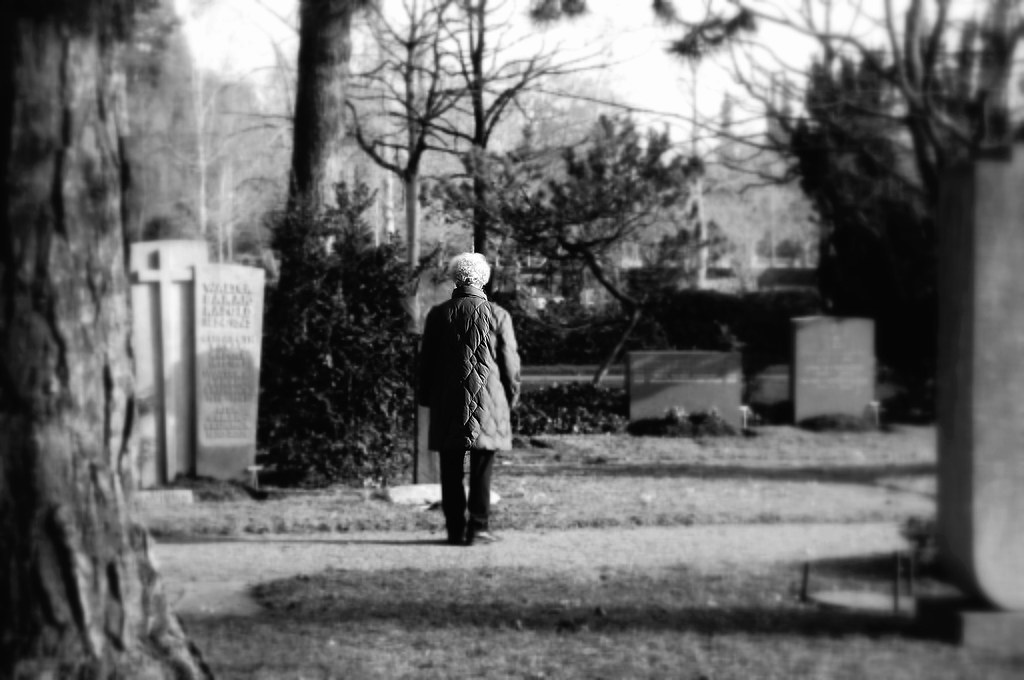
13. **Jay Osmond’s Confidant and the Longing for Flight**Another of Wayne’s brothers, Jay Osmond, shared a particularly intimate portrayal of their relationship, revealing Wayne as a lifelong confidant and expressing a unique spiritual connection. Jay conveyed the deep sorrow of his loss, noting, “My heart is deeply saddened for the loss of my brother Wayne. It is said that where there is great love there is great grief as we part during our earthly journey.” This heartfelt reflection underscored the profound emotional bond between them.
Jay further elaborated on their close relationship, stating, “Throughout my life I have always felt most connected to Wayne out of all of my siblings. He was my roommate and my confidant over the decades.” This revelation paints a picture of an enduring partnership, both personal and professional, that extended far beyond the stage. A poignant detail emerged from Jay’s recent visit to Wayne’s home, where Wayne expressed a deep sadness that he could no longer fly a plane, describing how “flying brought him peace.”
This detail provided Jay with a powerful metaphor for his brother’s passing. He found comfort in the belief that Wayne had transcended earthly limitations, declaring, “What gives me joy is to know that my brother ‘Wings’ has earned his wings and I can only imagine the heights he is soaring right now.” This symbolic language beautifully conveys the idea of liberation and peace, suggesting that Wayne had achieved a new form of flight in the afterlife, free from his physical constraints.
Jay also imagined a “spectacular” reunion with their parents, George and Olive Osmond, emphasizing the family’s strong faith in eternal family connections. His tribute illuminated not only the deep personal grief of a brother but also the comforting spiritual framework that allowed the Osmond family to interpret loss not as an ending, but as a transition to a higher, more peaceful existence, where cherished bonds endure beyond this life.

14. **A Lasting Legacy: Faith, Music, and Banana Splits**The collective tributes from Wayne Osmond’s family coalesce into a clear and compelling portrait of his lasting legacy, one woven from threads of profound faith, joyous music, and an endearing personal charm. The family’s official statement encapsulated his overarching impact: “His legacy of faith, music, love, and laughter have influenced the lives of many people around the world.” This comprehensive statement highlights the multifaceted nature of his contributions, both as a public figure and as a private individual.
Perhaps most endearingly, the family’s statement offered a glimpse into Wayne’s personal convictions and lighthearted spirit: “He would want everyone to know that the gospel of Jesus Christ is true, that families are forever, and that banana splits are the best dessert.” This unique blend of profound spiritual belief and simple, relatable joy perfectly captures the essence of Wayne Osmond, showcasing his unwavering faith alongside his delightful and down-to-earth personality.
Merrill Osmond further elevated this legacy, praising his brother as “a saint before he came into this world, and he will leave as an even greater saint than he came in.” Merrill also recognized Wayne’s specific talents, calling him “a genius in his ability to write music” and noting his capacity to “capture the hearts of millions of people and bring them closer to God.” These powerful words underscore Wayne’s dual impact: his artistic brilliance and his role as a spiritual beacon.
In remembrance, the Osmond family has thoughtfully created a “Wayne Osmond Celebration of Life Page” on Facebook, inviting fans to share their memories, photos, or even a funny joke. This initiative ensures that his legacy of warmth and connection extends beyond his immediate circle, allowing the countless lives he touched to contribute to a collective memorial. It is a testament to the enduring affection he inspired and the indelible mark he left on the world.
From the harmonious beginnings in Utah to the global stages of pop stardom, and through the quiet resilience of his later years, Wayne Osmond’s life was a testament to an unwavering spirit. His music may have captivated millions, but his humility, his capacity for unconditional love, and his profound faith were the true melodies of his existence. He faced life’s challenges with a remarkable optimism, finding joy in simple pleasures and maintaining a deep devotion to his family. As he takes his final flight, his “wings” earned through a life of grace and generosity, Wayne Osmond leaves behind an enduring legacy that will continue to inspire, reminding us all of the power of faith, the beauty of music, and the profound strength of family.




